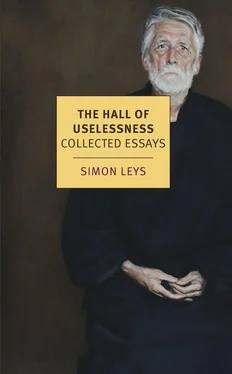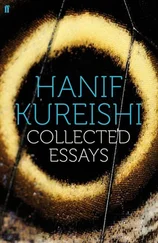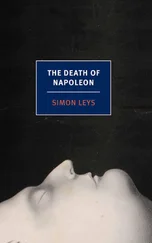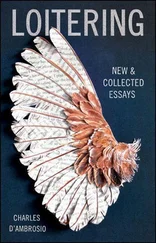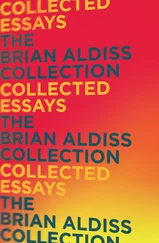Thus, the disconcerting barrenness of the Chinese monumental landscape cannot be read simply as a consequence of the chaotic years of the Maoist period. It is a feature much more permanent and deep — and it had already struck Western travellers in the nineteenth and at the beginning of the twentieth century.
In this particular respect, I think it would be difficult to find a witness better qualified and more articulate than Victor Segalen (1878–1919), a remarkable poet who was also a sinologist and archaeologist of considerable achievement; he spent several years in China at the end of the empire, and led two long archaeological expeditions into the more remote provinces of the interior. In one prose poem, “Aux dix mille années”[3] (1912), he memorably summarised the paradox which is, I think, at the root of the Chinese attitude towards the past. (My entire essay was originally triggered by this piece, and what I am trying to do here is merely to provide a comment to it.)
Segalen’s poem is a meditation on the relation between Chinese culture and time. It starts from a comparative evocation of the architectural principles of the great civilisations of the past, and opposes them to the Chinese conception. The non-Chinese attitude — from ancient Egypt to the modern West — is essentially an active, aggressive attempt to challenge and overcome the erosion of time. Its ambition is to build for all eternity by adopting the strongest possible materials and using techniques that will ensure maximum resilience. Yet, by doing this, the builders are merely postponing their ineluctable defeat. The Chinese, on the contrary, have realised that — in Segalen’s words—“nothing immobile can escape the hungry teeth of the ages.” Thus, the Chinese constructors yielded to the onrush of time, the better to deflect it.
Segalen’s reflection developed from technically accurate information: Chinese architecture is essentially made of perishable and fragile materials; it embodies a sort of “in-built obsolescence”; it decays rapidly and requires frequent rebuilding. From these practical observations, he drew a philosophical conclusion: the Chinese actually transferred the problem — eternity should not inhabit the building, it should inhabit the builder. The transient nature of the construction is like an offering to the voracity of time; for the price of such sacrifices, the constructors ensure the everlastingness of their spiritual designs.
LIMITS OF CHINESE ANTIQUARIANISM
Although, on the whole, it would not be wrong to say that the Chinese largely neglected to maintain and preserve the material expressions of their culture, such a statement would obviously require qualification.
Antiquarianism[4] did develop in China and constitutes in itself a topic that would deserve a thorough study. Here I wish merely to emphasise its two major limitations: first, antiquarianism appeared very late in Chinese cultural history; secondly, it remained essentially restricted to a narrow category of objects.
On the first point: although some aspects of antiquarianism (mostly literary) had already appeared in late Tang (after the crisis of An Lushan’s rebellion in 756), it essentially developed from the beginning of the Song (eleventh century) — in Western terms, this may seem quite ancient, but in Chinese history it is in fact rather late, as it represents the beginning of modern times. The Song displayed a passionate curiosity in antiquity, and this interest found many expressions: the first manifestations of scholarly archaeology, the study and collection of antique bronzes, the great systematic compilations of ancient epigraphs. More generally, Song tastes and fashions all began to reflect this new cult for the artistic forms of the past.
What is remarkable is that in China the development of antiquarianism actually reflected a highly abnormal situation. It resulted from a spiritual crisis and represented a new desire to define and affirm a Chinese cultural identity. The Song empire was a menaced world, a mutilated empire. Not only had the Chinese territory dangerously shrunk, but for the first time the Chinese emperors had to deal not with mere nomadic raiders but with alien leaders ruling in their own right. China’s aggressive neighbours now possessed set institutions and a fairly sophisticated culture; they directly challenged the Chinese traditional conception whereby China was the centre of the world. From the eleventh century, the Chinese faith in the universality of their world order seems to have been deeply shaken by the permanent politico-military crisis resulting from the foreign menace, and it is in this particular context that, for the first time in Chinese history, a massive cultural escape took place backwards in time: Chinese intellectuals effected a retreat into their glorious antiquity and undertook a systematic investigation of the splendours of their past. (Modern scholars have called this phenomenon “Chinese culturalism” and see in it a forerunner of the nationalism that was to develop many centuries later in reaction against the Manchu rule and Western aggressions.)
In this perspective, antiquarianism appears essentially as a search for spiritual shelter and moral comfort. Antiquarian pursuits were to provide Chinese intellectuals with much-needed reassurance at a time when they felt threatened in their cultural identity.
On the second point (the limited object of antiquarianism), traditionally Chinese aesthetes, connoisseurs and collectors were exclusively interested in calligraphy and painting; later on, their interest also extended to bronzes and to a few other categories of antiques. However, we must immediately observe that painting is in fact an extension of calligraphy — or at least, that it had first to adopt the instruments and techniques of calligraphy before it could attract the attention of the aesthetes. As to the bronzes, their value was directly dependent upon whether they carried epigraphs.[5] In conclusion, it would not be an excessive simplification to state that, in China, the taste for antiques has always remained closely — if not exclusively — related to the prestige of the written word .
ART COLLECTIONS
A study of Chinese antiquarianism should naturally include a chapter on art collecting in China. On this important topic we must limit ourselves here to a few basic remarks.[6]
The earliest collections recorded in history were the imperial collections. The early collections of the archaic rulers were composed of symbolic objects, with magic and cosmological properties, the possession of which entailed possession of political power. Progressively, the magico-cosmological collections of “maps and documents” ( tuji or tushu ) evolved into art collections of “calligraphy and painting”—the transition took place around the end of the Han period. (Note the ambiguity of the word “tu” which means both map and image . Originally, to possess the map-image of a territory was to have control over that territory. In international relations in pre-imperial China, when a state yielded territory to another state, the transaction was effected by surrendering the map-image of that territory.)
It is interesting to observe that, even after the magico-cosmological collections turned into aesthetic collections, the memory of their original function never disappeared completely. For instance, a Tang emperor, who was a connoisseur and avid collector, having learned that one of his high officials had some very rare ancient paintings, “invited” him to present them to the imperial collections. Needless to say, this kind of “invitation” could not be declined, and the minister, heartbroken, complied immediately. The emperor personally acknowledged the gift, and in his letter took pains to emphasise that, in taking possession of these paintings, he was not pursuing an idle and frivolous private aesthetic curiosity but actually meant to assume fully his public responsibility as a ruler.[7]
Читать дальше
